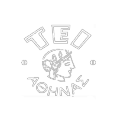Διαχείριση αρχειακών εγγράφων (Θ)
Πληροφορίες
Περιεχόμενο μαθήματος
1. Εισαγωγή στη Διαχείριση Εγγράφων
2. Ιστορικά στοιχεία
3. Αξία της Πληροφορίας
4. Διαχείριση Εγγράφων: αντικείμενο & εφαρμογή
5. Κύκλος Ζωής Εγγράφου
6. Πρόγραμμα Διαχείρισης Εγγράφων
7. Διαδικασία ενσωμάτωσης αρχών Διαχείρισης Εγγράφων
8. Διαχείριση Έργου
9. Συλλογή Στοιχείων
10. Ανάλυση Έργου
11. Ανάλυση Έργου (β' μέρος)
12. Αξιολόγηση & Εφαρμογή Έργου
13. Διαχείριση Εγγράφων & Νέες Τεχνολογίες
Μαθησιακοί στόχοι
Στόχος του μαθήματος είναι να δώσει στους φοιτητές τη δυνατότητα να κατέχουν:
- τις τεχνικές και τις διαδικασίες διαχείρισης εγγράφων σε ηλεκτρονική μορφή
- τις τεχνικές και διαδικασίες διαχείρισης μεταφοράς εγγράφων από φυσική σε ηλεκτρονική μορφή
- τις τεχνικές και διαδικασίες διαχείρισης ηλεκτρονικών καταγραφών φυσικών εγγράφων
Βιβλιογραφία
Atherton, Jay. From life cycle to continuum: Some thoughts on the records management- archives relationship.Archivaria,21 (Winter 1985-1986):43-51.
Bearman, David. Archival principles and the electronic office.Electronic evidence: Strategies for managing records in contemporary organizations. Pittsburgh-Pen: Archives and Museum Informatics, 1993, 146-175.
Brown, John Seely and Paul Duguid. The social life of information. Cambridge-Mass: HBS Press, 2002.
Constantini, Jo Ann. Survival skills for information professionals in the decade of turbulence.Records Management Quarterly,28(1)
Hersh, William. The electronic medical record: Promises and problems” Journal of the American Society for Information Science,46 (Dec1995):772-776.
NARA/National Archives and Records Administration. Frequently asked questions about records inventories. URL:www.archives.gov/records management/policy and guidance/frequently asked questions inventories.html
Saffady, William. Records and information management: Fundamentals of professional practice. ARMA International, 2004. URL: http://www.arma.org/pdf/Saffady
Shepherd, Elizabeth and Geoffrey Yeo. Managing records: A handbook of principles and practice.London: Facet Publishing, 2003.
Stevens, David O. and R.C. Wallace.Electronic records retention: New strategies for data life cycle management. Lenexa-KS: ARMA International, 2003.
US Environmental Protection Agency. What is a record? Interactive Q&A. URL: www.epa.gov/records/whatis/index.htm
Προαπαιτούμενα
Γνώση βασικών αρχών Αρχειονομίας, Διαχείριση της Πληροφορίας, Πληροφοριακών Συστημάτων
Διδάσκοντες
Προτεινόμενα συγγράμματα
Atherton, Jay. From life cycle to continuum: Some thoughts on the records management- archives relationship.Archivaria,21 (Winter 1985-1986):43-51.
Bearman, David. Archival principles and the electronic office.Electronic evidence: Strategies for managing records in contemporary organizations. Pittsburgh-Pen: Archives and Museum Informatics, 1993, 146-175.
Brown, John Seely and Paul Duguid. The social life of information. Cambridge-Mass: HBS Press, 2002.
Constantini, Jo Ann. Survival skills for information professionals in the decade of turbulence.Records Management Quarterly,28(1)
Hersh, William. The electronic medical record: Promises and problems” Journal of the American Society for Information Science,46 (Dec1995):772-776.
NARA/National Archives and Records Administration. Frequently asked questions about records inventories. URL:www.archives.gov/records management/policy and guidance/frequently asked questions inventories.html
Saffady, William. Records and information management: Fundamentals of professional practice. ARMA International, 2004. URL: http://www.arma.org/pdf/Saffady
Shepherd, Elizabeth and Geoffrey Yeo. Managing records: A handbook of principles and practice.London: Facet Publishing, 2003.
Stevens, David O. and R.C. Wallace.Electronic records retention: New strategies for data life cycle management. Lenexa-KS: ARMA International, 2003.
US Environmental Protection Agency. What is a record? Interactive Q&A. URL: www.epa.gov/records/whatis/index.htm
